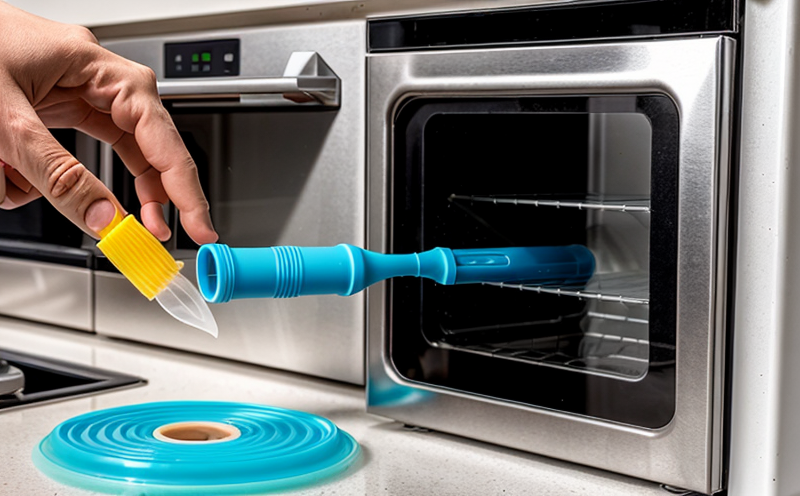ISO 604 Household Plastics Compression Properties Testing
The ISO 604 standard is a crucial tool in the evaluation of household plastics used in various everyday products such as containers, packaging materials, and utensils. This testing method measures the compression properties of household plastics under defined conditions to ensure they meet safety and performance standards. Understanding these properties is essential for quality assurance teams who need to verify that the plastic components will perform reliably in real-world usage.
The process involves compressing a specimen sample until it reaches a predetermined percentage deformation or force. The results provide critical information about the material's resilience, durability, and adaptability under stress—factors that directly impact product performance and safety. For R&D engineers, this testing is essential for innovation, ensuring new formulations of household plastics are robust enough to withstand various environmental conditions.
Compliance officers use these test results to ensure products meet regulatory requirements set by standards bodies like the International Organization for Standardization (ISO). By adhering to ISO 604 guidelines, manufacturers can demonstrate their commitment to producing safe and reliable household plastics. For procurement teams, this ensures that materials sourced are of high quality and will perform as expected in manufacturing processes.
The test procedure is stringent and involves precise specimen preparation and controlled environmental conditions to ensure accurate results. Specimens must be cut into specific dimensions per the ISO 604 guidelines, typically with a uniform thickness and length. The compression testing machine applies force gradually until deformation reaches the specified percentage, recording the force exerted at different stages.
Acceptance criteria for household plastics under ISO 604 are based on the maximum allowable force before failure or permanent deformation occurs. Compliance with these standards ensures that products do not only meet but exceed safety expectations, thereby enhancing consumer confidence in the quality and reliability of the materials used.
| Applied Standards |
|---|
| ISO 604:2019 - Plastics — Determination of compression properties at room temperature |
| ASTM D1238 - Standard Test Method for Flow and Extrudate Volume Rates of Thermoplastics |
The use of these standards ensures that the testing process is consistent, replicable, and comparable across different laboratories. This consistency is critical in maintaining high-quality control within manufacturing processes.
For R&D engineers, understanding ISO 604 is essential for developing new formulations that not only meet but surpass current standards. By adhering to these guidelines, they can innovate with confidence, knowing their products will be robust and reliable.
Applied Standards
| Standard | Description |
|---|---|
| ISO 604:2019 | Determines the compression properties of thermoplastic materials at room temperature. |
| ASTM D1238 | Standard test method for flow and extrudate volume rates of thermoplastics. |
| EN ISO 604:2019 | Determines the compression properties at room temperature in accordance with ISO 604. |
| IEC 60754-8 | Standard for electrical and electronic equipment containing plastics materials. |
The combination of these standards ensures comprehensive testing that covers various aspects of household plastic properties, from mechanical strength to thermal stability.
Scope and Methodology
ISO 604 Household Plastics Compression Properties Testing involves several key steps. The first step is the preparation of the specimen according to ISO 604 specifications. This includes ensuring that the specimens are cut into standard dimensions with uniform thickness and length.
- The specimens should be prepared from the same batch of material used in production, if possible.
- Any imperfections or variations in the sample may lead to inaccurate results.
Once the specimen is ready, it is placed in a compression testing machine. The machine applies force gradually until the deformation reaches the specified percentage as per the ISO 604 standard. The force applied and the resulting deformation are recorded at different stages of the test.
- The first stage involves applying initial force to ensure uniform distribution across the specimen.
- Subsequent stages involve increasing the force incrementally until the predetermined deformation or force is reached.
The testing machine also records the maximum force applied before failure or permanent deformation occurs. This data provides critical insights into the material's compression properties, which are essential for quality control and product development.
After completing the test, the results are analyzed to ensure they meet the acceptance criteria specified in ISO 604. Compliance with these standards ensures that household plastics used in products like containers and utensils are safe and reliable.
Quality and Reliability Assurance
- Data Accuracy: Regular calibration of testing equipment and adherence to precise specimen preparation procedures ensure accurate data collection. This consistency is crucial for maintaining high-quality standards in manufacturing processes.
- Environmental Control: Maintaining controlled environmental conditions during the test ensures that results are not influenced by external factors, providing more reliable data.
R&D engineers and compliance officers rely on these stringent quality assurance measures to ensure products meet or exceed industry standards. By adhering to ISO 604 guidelines, manufacturers can demonstrate their commitment to producing safe and reliable household plastics.
For procurement teams, this testing ensures that materials sourced are of high quality and will perform as expected in manufacturing processes. This approach helps maintain a consistent supply chain and reduces the risk of substandard materials being used in production.





